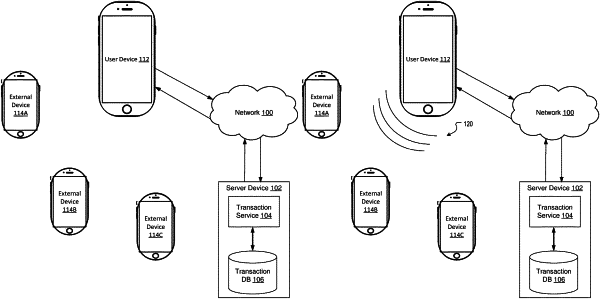| CPC G06Q 20/3278 (2013.01) [G06Q 20/3224 (2013.01); G06Q 20/382 (2013.01)] | 15 Claims |

|
1. A user device comprising:
a processor;
a wireless transceiver in communication with the processor; and
a non-transitory memory storing instructions that, when executed by the processor, cause the processor to perform processing comprising:
receiving, by the wireless transceiver, a command in a broadcast message sent by at least one member of a network of trust of which the user device is also a member due to performing a process comprising:
sending, through the wireless transceiver, a challenge to one of a plurality of devices that is a member of the network of trust;
receiving, through the wireless transceiver, a second user device identifier from the one of the plurality of devices in response to the challenge;
receiving, through the wireless transceiver, a second challenge from the one of the plurality of devices;
generating a response to the second challenge, the generating comprising inserting information uniquely identifying the user device into the response;
sending, through the wireless transceiver, the response to the one of the plurality of devices in response to the second challenge;
receiving, through the wireless transceiver, a second response generated after receiving the second user device identifier from the one of the plurality of devices;
in response to receiving the second user device identifier, extracting information about the one of the plurality of devices from the second response and locally storing the information about the one of the plurality of devices in a local set of a plurality of member devices maintained in local memory; and
in response to identifying the information about the one of the plurality of devices in the local set of the plurality of member devices maintained in local memory, joining the network of trust; and
executing the command.
|